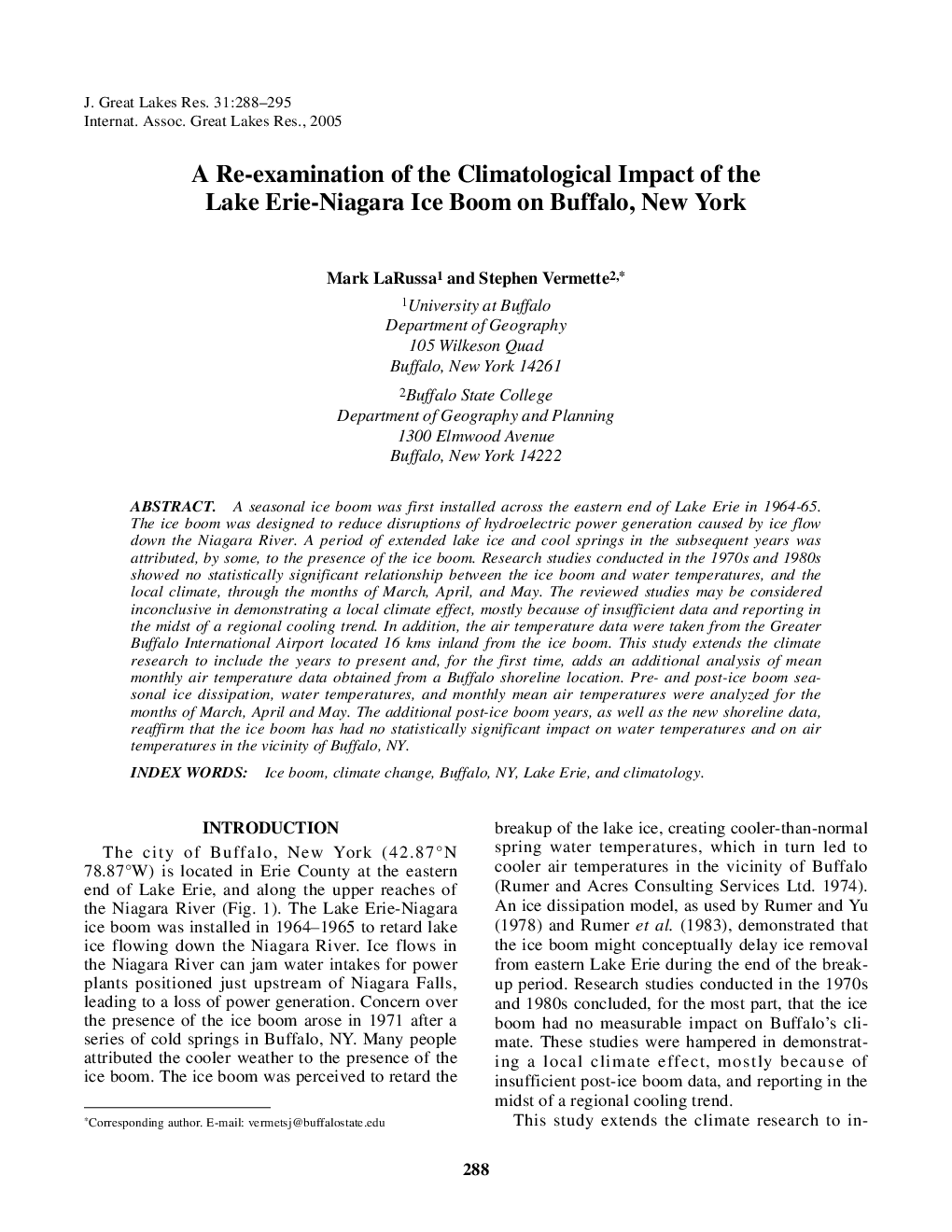| Article ID | Journal | Published Year | Pages | File Type |
|---|---|---|---|---|
| 9450404 | Journal of Great Lakes Research | 2005 | 8 Pages |
Abstract
A seasonal ice boom was first installed across the eastern end of Lake Erie in 1964-65. The ice boom was designed to reduce disruptions of hydroelectric power generation caused by ice flow down the Niagara River. A period of extended lake ice and cool springs in the subsequent years was attributed, by some, to the presence of the ice boom. Research studies conducted in the 1970s and 1980s showed no statistically significant relationship between the ice boom and water temperatures, and the local climate, through the months of March, April, and May. The reviewed studies may be considered inconclusive in demonstrating a local climate effect, mostly because of insufficient data and reporting in the midst of a regional cooling trend. In addition, the air temperature data were taken from the Greater Buffalo International Airport located 16 kms inland from the ice boom. This study extends the climate research to include the years to present and, for the first time, adds an additional analysis of mean monthly air temperature data obtained from a Buffalo shoreline location. Pre- and post-ice boom seasonal ice dissipation, water temperatures, and monthly mean air temperatures were analyzed for the months of March, April and May. The additional post-ice boom years, as well as the new shoreline data, reaffirm that the ice boom has had no statistically significant impact on water temperatures and on air temperatures in the vicinity of Buffalo, NY.
Keywords
Related Topics
Physical Sciences and Engineering
Earth and Planetary Sciences
Earth and Planetary Sciences (General)
Authors
Mark LaRussa, Stephen Vermette,
